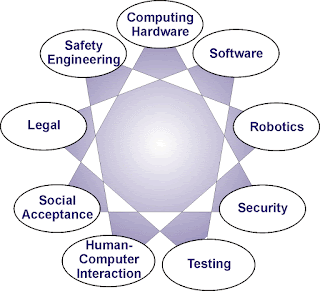Autonomous Vehicle Safety: An Interdisciplinary Challenge
By Phil Koopman & Mike Wagner
Abstract:
Ensuring the safety of fully autonomous vehicles requires a multi-disciplinary approach across all the levels of functional hierarchy, from hardware fault tolerance, to resilient machine learning, to cooperating with humans driving conventional vehicles, to validating systems for operation in highly unstructured environments, to appropriate regulatory approaches. Significant open technical challenges include validating inductive learning in the face of novel environmental inputs and achieving the very high levels of dependability required for full-scale fleet deployment. However, the biggest challenge may be in creating an end-to-end design and deployment process that integrates the safety concerns of a myriad of technical specialties into a unified approach.
Read the preprint version here for free (link / .pdf)
Official IEEE version (subscription required):
http://ieeexplore.ieee.org/document/7823109/
DOI: 10.1109/MITS.2016.2583491
IEEE Intelligent Transportation Systems Magazine (Volume: 9, Issue: 1, Spring 2017, pp. 90-96)
Correction:
"This would require a safety level of about 1 billion operating hours per catastrophic event. (FAA 1988)" should be
"This would require a safety level of about 1 billion operating hours per catastrophic event due to the failure of a particular function. (FAA 1988)" (Note that in this context a "function" is something quite high level such as the ability to provide sufficient thrust from the set of jet engines mounted on the airframe.)
(Originally posted January 30, 2017)








